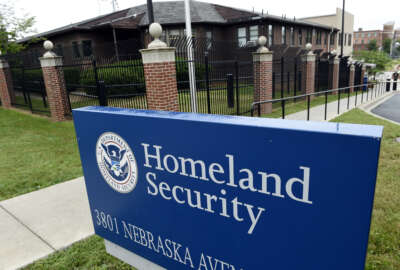Leaders of research and development components for the Department of Homeland Security explained to lawmakers that the most important part of their projects wasn’t necessarily the technologies themselves, but the systems in which they’d be deployed that were critical.
“There’s a distinction between whether a technology by itself works, versus whether it works in a complicated system,” said Reginald Brothers, undersecretary of the Science and Technology Directorate. “There’s technology that has been evaluated and is ready to use; there’s additional problems with how this would actually be used in the system by operators. Does it work? Yes it does work, but the question is how would this actually work in the … environment?”
Brothers, along with Huban Gowadia, director of the Domestic Nuclear Detection Office, and Kathryn Brinnsfield, director of the Office of Health Affairs, defended a $636 million research and development request its fiscal 2017 budget request. Senators also asked about the processes behind resource allocation decisions during a Homeland Security subcommittee appropriations hearing on April 6.
Gowadia echoed Brothers’ statements while discussing detection systems deployed at various commercial shipping and travel points of entry into the country.
“Technology is a critical part of the global nuclear detection architecture, but it’s not the only part,” she said. “It is really important that we have systems that can be brought to bear if an intelligence queue goes up, if a law enforcement officer needs it. We’re building agile technologies that can go to the fight.”
Brothers also detailed the process by which S&T reviews and evaluates projects. The first, he said, is the lowest point of the process, where his team examine schedule, budget and technical performance. Essentially, they look for a need.
“If we identify a problem with those,” he said, “that’s when we start knowing we have to take some action.”
The second process, he said, involves looking at such metrics as how invested the customer is in a particular solution, how likely it is to be used by an operator, and technology foraging, which is whether the program manager has looked at commercial products to see what already exists, what can be leveraged, and whether it can be purchased. All of these basically boil down to determining the whether the cost of the project matches up with the returns.
The final overview process S&T looks at is the key performance parameters of the projects. In other words, do they function, and how well?
“We don’t want to create a technology that’s not relevant to the operators,” Brothers said.
The lawmakers and agency leaders then went down a list of various programs, discussing their progress and the way these metrics have been applied.
Brothers provided updates for projects from S&T including:
- Improved technology for airport security screenings aimed toward increasing security and speed of processing for the Transportation Security Administration, currently in development.
- Biometric scanners to track the identities of individuals entering and leaving the country for U.S. Customs and Border Protection, currently scheduled for testing.
- Tunnel detection equipment, including underground sensors, for CBP and U.S. Immigration and Customs Enforcement, currently deployed and being improved.
- A detection system for CBP to secure the border against low flying small aircraft.
- BioWatch, an early warning system for biological and chemical attacks developed and operated in collaboration with OHA, updated to reduce false positives.
Gowadia described the current status of nuclear material scanners and their deployment throughout the country, specifically commercial shipping points of entry to the country. DHS feds currently use nuclear material detection systems on 100 percent of containerized cargo entering the country, all truck-borne cargo that crosses the border, all Coast Guard boarding parties, all general aviation aircraft and by all TSA Visible Intermodal Prevention and Response teams.
In addition, DNDO is offering support and training to local and state-level partners, helping them deploy new equipment and improving coordination.
“What you’re hearing me talk about here is a systematic approach, a layered, multifaceted approach,” Gowadia said. “So very often you hear ‘we have to be right every time; they only have to be right once.’ If we get this right, from material security, detection capabilities, laws and regulations, nuclear forensics, good consequence management, we tie all that together into good nuclear security architecture, they have to be right so many times, increasing their operational footprint, allowing our intelligence community and law enforcement partners to get them before they can put nuclear and other radioactive material to malevolent use.”
Chairman John Hoeven (R- N.D.) also recognized DNDO for being consistently highly rated in Partnership for Public Service workforce surveys. Gowadia offered some keys to success on this subject:
- The ability to see actual results is motivating. “Nothing is more rewarding, if you will forgive me for a nerd, than to actually know an invention came to life, changed real action in the field, and made the life of an officer better. We get to do that at DNDO,” Gowadia said.
- DNDO analyses the results of the surveys every year, and responds to any issues raised immediately and collaboratively. “We involve [the staff] in all the solutions. You don’t get to complain at DNDO, you get to fix it,” she said.
Copyright
© 2024 Federal News Network. All rights reserved. This website is not intended for users located within the European Economic Area.
